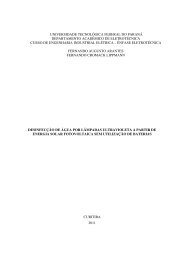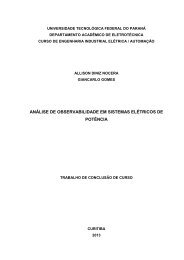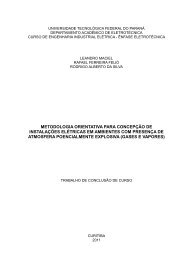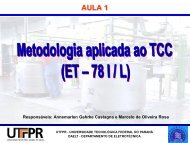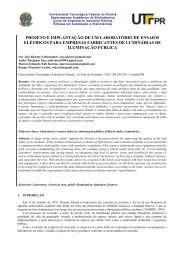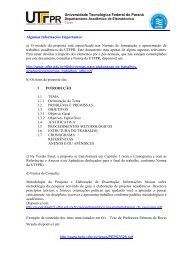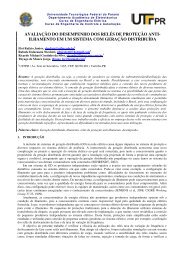You also want an ePaper? Increase the reach of your titles
YUMPU automatically turns print PDFs into web optimized ePapers that Google loves.
<strong>Hydraulic</strong> <strong>Library</strong> 4.2<strong>User</strong> <strong>Manual</strong>the liquid is subjected to a tensile stress, cavities do not form as a result of liquidrupture but are caused by the rapid growth of these nuclei.To understand this, think of beer (or champagne if you prefer) in a bottle, when itis closed you see no air bubbles and the liquid does not look fizzy. The pressure inthe bottle is above the saturation pressure of the gas in the liquid. When you openthe bottle suddenly bubbles appear and so the dissolved gas (molecules of gas heldin the liquid) starts to appear as gas. In fact the liquid is gas saturated and theatmospheric pressure is less than the saturation pressure of the liquid. Thisphenomenon is clearly not cavitation but air release (aeration). Considering nucleieffects, bubbles form only at particular places in your glass: around the glass (dueto small asperities) and round any particles present in the liquid. Theoretically, ifyour liquid was perfectly pure and the wall of the system perfectly regular, airrelease or cavitation would occur with great difficulty!The key point about cavitation is that it is a phase change: the liquid changes tovapor. A comparison can be made between cavitation and boiling. If we look at thephase diagram below:pressureFigure 2.48: Cavitation and boilingsolidliquidgas (vapor)boilingcavitationtemperatureBoiling is a phase change at constant pressure and variable temperature andcavitation is a phase change at constant temperature and variable pressure.In any system air release starts first and if the pressure decreases further, cavitationmay occur. This means that, sometimes, people talk about cavitation when the realphenomenon is air release. Both phenomena can lead to destruction of the materialor component.In both cases it is entrained gas that causes the troubles. When cavities encounterhigh pressure in the downstream circuit, these bubbles or cavities can be unstableand can collapse implosively. The pressure developed at collapse can be largeenough to cause severe mechanical damage in the containing vessel. It is wellknownthat hydraulic pumps and pipework can be badly damaged by cavitaton andair release.In all classical hydraulic systems air release and cavitation must be avoided toprevent material destruction but sometimes it is required like for injection systemsto prepare the spray formation.45



